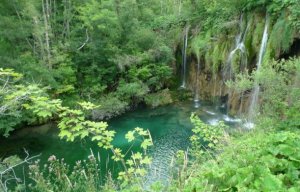
Rapid acceptance for Denisol Pure Indigo
Proactive step to reduce the chemical’s use.

8th July 2021
Innovation in Textiles
|
St. Gallen, Switzerland
Restrictions on free aniline content in chemical products has become more stringent in the updated chemical substances lists of environmental performance label bluesign, headquartered in St. Gallen, Switzerland.
Aniline reduced indigo is now a must for bluesign Approved indigo types and is restricted in other dyes and auxiliaries to a maximum limit of 500 mg/kg.
Based on concerns such as the US Environmental Protection Agency classifying aniline as a Group B2 probable human carcinogen (which means there’s some evidence it might cause cancer) and its toxicity to the natural environment, bluesign is taking a proactive step to reduce the chemical’s use.
Having come into effect on July 1, 2021, the bluesign revision incorporates new scientific knowledge on the toxicological and ecological profile of substances, new legal classification of chemical substances, new legal consumer safety limits, revised risk assessments and feedback from experts.
The bluesign System Substances List (BSSL) specifies limits for chemical substances in articles (consumer safety limits) and the bluesign System Black Limits (BSBL) specifies threshold limits for chemical substances in finished chemical products such as auxiliaries or dyes. The compilation of substances in the BSBL includes all substances for which a precautionary hazard-based threshold limit is defined.
The bluesign RSL is an extract of the BSSL and contains consumer safety limits and recommended testing methods for the most important and legally restricted substances in textile and leather articles and accessories.
In other changes, reflecting the fact that residual monomers play an important role in eliminating hazardous chemicals in the textile supply chain, a usage ban has been defined for N-methylolacrylamide and 1-vinylimidazole.
For 2-pyrrolidone, a solvent used in inks, a consumer safety limit has been defined. The mid-term goal is to define a usage ban for this solvent which has to be classified as toxic for reproduction according to recent studies.
For similar reasons, 2-Butanone oxime is now under more stringent observation by bluesign. The free content of this substance, which is used as a blocking agent for polyurethanes, is now limited in chemical products. A total usage ban of this substance as a blocking agent is planned.

Business intelligence for the fibre, textiles and apparel industries: technologies, innovations, markets, investments, trade policy, sourcing, strategy...
Find out more